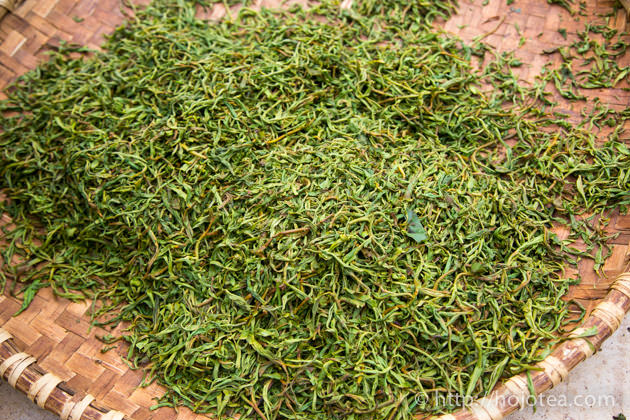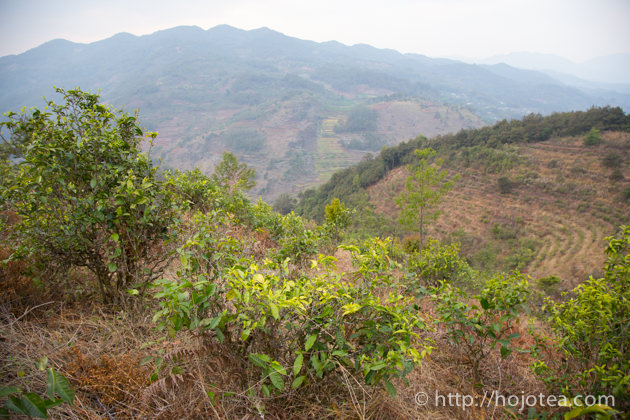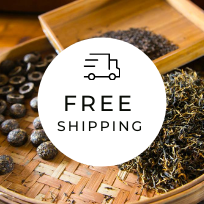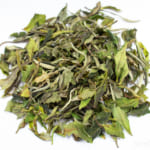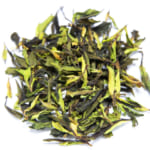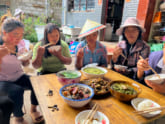- HOME >
- Origin of Tea
HOJO original tailor-made tea from Yunnan
- [2016.04.06] Posted By Akira Hojo
In HOJO’s tea lineup, we have many teas produced in Yunnan Province of China. We are always interested in Yunnan tea because if we work very hard to search we are still able to find some natural farming tea gardens in Yunnan. The quality of tea collected from those natural farming gardens is outstanding; in particular the aftertaste is very long-lasting. However, we also do have a dilemma with Yunnan tea. Many tea manufacturers in Yunnan are very rough in tea handling and processing management. In most cases, the fresh tealeaf is damaged and turned into dark color before it reaches the tea factory. Despite the fresh tea leaf is of good quality, it is often spoiled during the process of tea making. As we are well aware of these problems, we practice unique method to manage the quality of our teas.
Tailor-made tea
Since 2015 we stopped buying the ready-made tea directly from tea manufacturers. Instead, we request the reliable tea manufacturers to produce the tailor-made tea for us. Before 2015, we often visit the tea manufacturer and evaluate the teas they have already produced. We conduct series of tasting and we buy the particular bags of tea if we found the quality is meeting our requirements. Literally we were buying from the manufacturer. However, I felt we could get even better tea if we manage some aspects as follow.
- We select the tea garden and the section to collect fresh tea leaves
- We specify the plucking standard
- We specify the process parameter
Select the ideal tea garden
In Yunnan, tea gardens, especially those consist of old tea trees, are generally owned by the minority ethnics who lives in mountain. They pluck tea and sell the fresh leaves to the tea manufacture. Sometimes they also produce tea themselves and sell as raw pu-erh teas. But their skill in making tea is obviously very unrefined and too wild. They are lack of consistent control on the tea process parameter. They often burn the tea and tea usually has many other quality defects. The tea manufactures purchases tea from many farmers and usually classifies the leaves according to their own criteria. If we want to produce tea from the garden we like, we need to visit there before tea season starts and clearly specify the exact location for the farmers to collect tea. We usually specify the area, garden and what type of tea tree. I usually give them a few criteria to make sure that our teas are collected from the natural farming garden.
Plucking standard
There are a few different plucking standards for pu-erh tea, such as 1 bud 1 leaf, 1 bud 2 leaves, 1 bud 3 leaves and random plucking. The plucking standard affects the flavor and taste of tea. So we always like to determine the plucking standard for the each tea according to cup characteristic we want. For example, we request 1 bud 2 leaves for making Yan Ming Shan raw pu-erh tea in order to emphasize its creamy texture and mellow taste. On the contrary, we request 1 bud and 3-4 leaves for Wu Liang Shan and Ma An Shan raw pu-erh in order to get stronger taste, less bitter and fruity flavor.
Customized process
In making pu-erh tea, there are a huge variance among the manufacturer in regards of withering time and pan-frying method. The longer the withering is conducted, the lesser the moisture remains in tealeaf. Eventually it is very difficult to manage the pan-frying process because of tealeaf with less moisture content will easily burnt. However, if pu-erh tea is produced without sufficient withering process, it tends to give greenish flavor (箐味). Nowadays, there are more and more tea manufacturers conduct very light pan-frying, and the enzyme is still active for further fermentation during the sunshine drying process. With this light pan-frying method, they can get rid of the greenish flavor as floral flavor is developed during the sunshine drying process. Tea gives flavor reminiscent of light fermented oolong tea. However, the lightly pan-fried tea is not very ideal for aging. We always like to manage both withering and pan-frying so as to produce the tea that is nice to drink when it is fresh as well as ideal for aging. Besides pu-erh teas, we also tailor-made our black tea and white tea.
I have been kept visiting Yunnan Province since 2010. But we only started implementing the tailor-made tea production since 2015. For tailor-made tea, we need to responsible for the tea we requested. This method is relatively more risky if we do not know how to determine the tea leaves, agriculture, and manufacturing process. Nevertheless, most importantly we must have a good relationship and mutual understanding with the tea manufacturer to share the philosophy in tea as us did. In fact, we are not the only one who buys tea in tailor-made production style. Some China tea companies who are extremely particular about the quality do practice the tailor-made production too. Since we are improving many aspects year by year, I am pretty much looking forward to tasting the latest tea we commissioned.
Related Articles
How to get the latest update on HOJO Tea?
1. Follow Twitter, 2. Click "Like" on Facebook, and 3. Subscribe in newsletter. You can have the latest tea news from HOJO Tea.
 Subscribe the Newsletter to enjoy the privileges
Subscribe the Newsletter to enjoy the privileges- You may receive a free sample upon purchase, or you may have the priority to purchase special products. So please remember to subscribe our newsletter as well as the social network.
- Yunnan Chun Jian Green Tea from High Mountain Gardens
- Yunnan Chun Jian Green Tea is now available.This tea is made from naturally grown leaves harvested from high mountain gardens at 2100m above sea level. It has a rich, long-lasting lingering aftertaste, comparable to raw Pu-erh tea. Yunnan as a Distinctive Tea Growing Region Over the past 20 years, we have explored a wide range …
- Limited Loose Leaf Release of 2025 Da Xue Shan Wild Raw Pu-erh Tea
- We have released the 2025 loose-leaf version of Da Xue Shan Wild Raw Pu-erh Tea.This tea comes from wild tea trees that grow naturally in the high mountains of Yunnan Province, at elevations above 2000 meters. This year, we were only able to secure a small quantity for retail, and the current release is available …
NEW ARTICLES
 Yunnan Chun Jian Green Tea from High Mountain Gardens
Yunnan Chun Jian Green Tea from High Mountain Gardens- Yunnan Chun Jian Green Tea is now available.This tea is made from naturally grown leaves harvested from high mountain gardens at 2100m above sea level. It has a rich, long-lasting lingering aftertaste, comparable to raw Pu-erh tea. Yunnan as a Distinctive Tea Growing Region Over the past 20 years, we have explored a wide range …
 Limited Loose Leaf Release of 2025 Da Xue Shan Wild Raw Pu-erh Tea
Limited Loose Leaf Release of 2025 Da Xue Shan Wild Raw Pu-erh Tea- We have released the 2025 loose-leaf version of Da Xue Shan Wild Raw Pu-erh Tea.This tea comes from wild tea trees that grow naturally in the high mountains of Yunnan Province, at elevations above 2000 meters. This year, we were only able to secure a small quantity for retail, and the current release is available …
 2025 Da Xue Shan Wild White Tea Now Available from Yunnan
2025 Da Xue Shan Wild White Tea Now Available from Yunnan- The 2025 harvest of Da Xue Shan Wild White Tea is now available. Crafted from truly wild Camellia taliensis trees growing naturally in the high-altitude forests of Yunnan, this tea offers a purity and character unique to its origin. This year’s unusually dry climate during the withering season was ideal, resulting in a floral and …
 Why Do Some Teas Taste Astringent? Exploring the Causes and Mechanisms of Astringency
Why Do Some Teas Taste Astringent? Exploring the Causes and Mechanisms of Astringency- Tea can range from having no noticeable astringency to possessing a very strong one. What causes this astringency? This article explores the causes and mechanisms behind astringency in tea. Causes of Astringency Astringency arises from the binding of tea components to proteins in the oral cavity, creating a sensation of tightness or dryness. The tongue …
 The Impact of Heat Sources on Tea Flavor
The Impact of Heat Sources on Tea Flavor- It is widely recognized that the material of a kettle plays an important role in shaping the taste of water for brewing tea. Yet, an often overlooked but equally significant factor is the type of heat source used to boil the water. Different heat sources, whether gas, electric, charcoal, or wood fire, can impart distinct …
 New Release of High Mountain White Tea
New Release of High Mountain White Tea- We are pleased to introduce our High Mountain White Tea, sourced from a unique tea garden with two key features: 1. Located at an altitude of 2200-2300m2. Completely wild and untended The ideal natural conditions of this garden result in tea of exceptional quality, offering a pure and gentle, nourishing taste. High Altitude and Wild …
 New Release of Da Xue Shan Wild White Tea 2024
New Release of Da Xue Shan Wild White Tea 2024- We have released the 2024 Da Xue Shan Wild White Tea Loose Leaf. This tea was produced under our direct supervision during our stay in Yunnan Province, ensuring meticulous production management on site. Definition of Wild Tea in Yunnan Province People in Yunnan strongly associate Camellia taliensis with wild tea, regardless of where it is …
 New Release of Wild Pu-erh Jasmine Pearl
New Release of Wild Pu-erh Jasmine Pearl- Out of curiosity, we decided to create a jasmine tea based on Da Xue Shan Wild Raw Tea. This resulted in an exceptionally rare tea, not only in Japan but also in China. Custom Production Network for Jasmine Tea At our store, we source various types of base teas from different regions during the spring. …
 2024 Overview: Our Yunnan White Tea Quality, Process, and Weather Insights
2024 Overview: Our Yunnan White Tea Quality, Process, and Weather Insights- One of the teas we’ve been focusing on in Yunnan Province is white tea. Historically white tea has been produced in both Fujian Province and Yunnan Province for a long time. While white tea from Fujian Province is well-managed during processing, we are dissatisfied with the quality of the raw materials due to the use …
 Yunnan’s Hospitality Culture: Expressed Through Meals
Yunnan’s Hospitality Culture: Expressed Through Meals- In China, as a form of greeting, it’s common to say “你吃饭了吗?” which means “Have you eaten?” However, in Yunnan Province, the phrase “吃饭” is often used in various situations, more like “Eat, eat,” serving as an invitation to share a meal. Yet, with prolonged exposure to Yunnan, one comes to understand that these meal …
Shop Info

Address:Lot No. T-215, 3rd Floor, The Gardens Mall, Mid Valley City, Lingkaran Syed Putra, 59200 Kuala Lumpur
Tel: +603-2287-4537
Business Hour: 10am to 10pm
Category
- New Arrival at HOJO Online Shop
- Featured Articles
- Newsletter
- Types of Tea
- Origin of Tea
- Teapot and Tea Equipment
- Tea Column
- How to enjoy tea
- Tea Processing
- How to choose quality tea
- Tea constituents and functional effect
- Safety of Tea
- Foods
- Tea Business Operation
- Hobby and Outdoor Activity
- Ranking of Tea
- Video
- FAQ
- Media Release
Profile

- AKIRA HOJO
- I invite you to experience my tea selections.I was born in Nagano, Japan. In university, I studied agricultural chemistry, and I have the master degree in food science. I worked in Japanese food industry for 10 years. I involved in R&D, QC and QA. As a factory manager, I implemented ISO9000 series and managed the factory.
- The Art of Tea Magazine
- We posted the article on “The Art of Tea Magazine No.9, the magazine is published in Taiwan. We featured some scientific view about the tetsubin
- New Straits Times
- The Malaysian National Newspaper, New Straits Times featured HOJO Tea on 17-Oct-2007.

